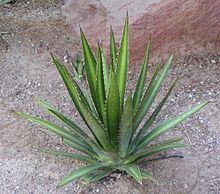
The Chihuahuan Desert is a desert ecoregion designation covering parts of northern Mexico and the southwestern United States. It occupies much of far West Texas, the middle to lower Rio Grande Valley and the lower Pecos Valley in New Mexico, and a portion of southeastern Arizona, as well as the central and northern portions of the Mexican Plateau. It is bordered on the west by the Sonoran Desert, the Colorado Plateau, and the extensive Sierra Madre Occidental range, along with northwestern lowlands of the Sierra Madre Oriental range. Its largest, continual expanse is located in Mexico, covering a large portion of the state of Chihuahua, along with portions of Coahuila, north-eastern Durango, the extreme northern part of Zacatecas, and small western portions of Nuevo León. With an area of about 501,896 km2 (193,783 sq mi), it is the largest desert in North America. The desert is fairly young, existing for only 8000 years.

Agave americana, common names century plant, maguey, or American aloe, is a species of flowering plant in the family Asparagaceae, native to Mexico and the United States in Texas. It is cultivated worldwide as an ornamental plant, and has been naturalized in many regions, including parts of the West Indies, South America, Mediterranean Basin, Africa, Canary Islands, India, China, Thailand, and Australia.
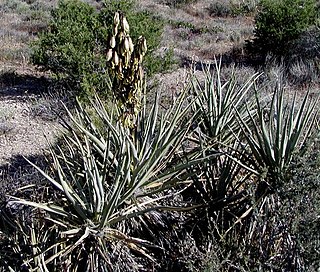
Yucca baccata is a common species of yucca native to the deserts of the southwestern United States and northwestern Mexico, from southeastern California north to Utah, east to western Texas and south to Sonora and Chihuahua. It is also reported in the wild in Colombia.
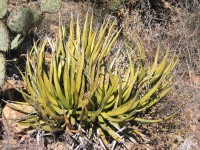
The Lechuguilla Desert is a small desert located in southwestern Arizona near the U.S.-Mexico border. It is considered to be part of the Lower Colorado Valley region of the Sonoran Desert. It lies in a north–south direction between the Gila Mountains and the Cabeza Prieta Mountains, and almost entirely in the Barry M. Goldwater Air Force Range. The desert is named after the Lechuguilla plant, known scientifically as Agave lecheguilla, which occurs exclusively in the Chihuahuan desert many hundreds of miles to the east. The desert is also on the north border of the Gran Desierto de Altar of Sonora, Mexico.

Prosopis glandulosa, commonly known as honey mesquite, is a species of small to medium-sized, thorny shrub or tree in the legume family (Fabaceae).
Sphaeralcea incana, with the common names gray globemallow and soft globemallow, is a desert plant in the mallow family (Malvaceae).
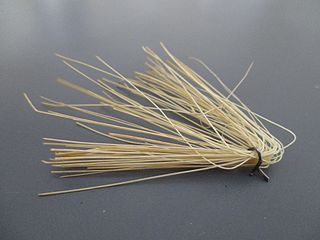
Ixtle, also known by the trade name Tampico fiber, is a stiff plant fiber obtained from a number of Mexican plants, chiefly species of Agave and Yucca. The principal source is Agave lechuguilla, the dominant Agave species in the Chihuahuan Desert. Ixtle is the common name of the plants producing the fiber. Ixtle is also the common name of a species of bromeliad, Aechmea magdalenae, grown in southern Mexico for its silky fibers.
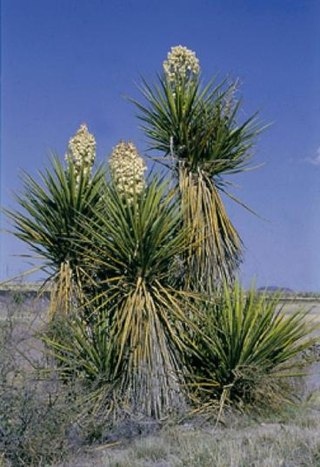
Yucca faxoniana is a bladed evergreen shrub of the genus Yucca. It is known by the common names Faxon yucca,Spanish dagger, and giant dagger.
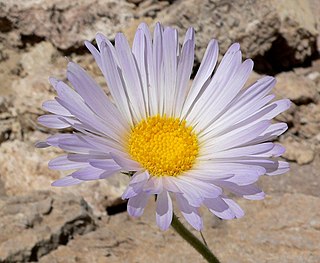
Xylorhiza tortifolia is a species of flowering plant in the family Asteraceae, known by the common names Mojave-aster and Mojave woodyaster.

Echinocereus chisoensis is a rare North American species of cactus known by the common name Chisos Mountain hedgehog cactus, native to the Chihuahuan Desert of northern Mexico and the south-central United States.

Echinomastus mariposensis is a rare species of cactus known by the common names Lloyd's fishhook cactus, golfball cactus, silver column cactus, and Mariposa cactus. It is native to a small section of territory straddling the border between Brewster County, Texas, in the United States and the state of Coahuila in Mexico. It has been federally listed as a threatened species in the United States since 1979.
Agave phillipsiana is a rare species of flowering plant in the asparagus family known by the common names Grand Canyon century plant and Phillips agave. It is endemic to Arizona in the United States, where it lives only in Grand Canyon National Park. It is a perennial herb or shrub.

Dasylirion leiophyllum is a species of flowering plant in the asparagus family known by the common names green sotol, smooth-leaf sotol, and smooth sotol. It is native to North America, where it occurs in Chihuahua and Coahuila in Mexico and New Mexico and western Texas in the United States. It was first collected by Valery Havard in 1880 and was described by William Trelease in 1911.

The Sierra del Carmen, also called the Sierra Maderas del Carmen, is a northern finger of the Sierra Madre Oriental in the state of Coahuila, Mexico. The Sierra begins at the Rio Grande at Big Bend National Park and extends southeast for about 72 kilometres (45 mi), reaching a maximum elevation of 2,720 metres (8,920 ft). Part of the Sierra del Carmen is protected in the Maderas del Carmen Biosphere Reserve as part of a bi-national effort to conserve a large portion of the Chihuahua Desert in Mexico and Texas.
Agave univittata, the thorn-crested century plant or thorn-crested agave, is a plant species native to coastal areas of southern Texas and northeastern Mexico, at elevations less than 100 m. It has been widely named Agave lophantha by botanists including Howard Scott Gentry, but the name A. univittata is older and therefore more in accord with nomenclatural rules of botany.

Agave havardiana is a plant species native to the Big Bend area of western Texas as well as Chihuahua and Coahuila. It prefers grassy to rocky slopes or woodlands at elevations of 1200–2000 m.
Agave gracilipes, common names Maguey de pastizal or slimfoot century plant, is a plant species native to western Texas, southern New Mexico and Chihuahua. It is found in grasslands, desert scrub and open pinyon-juniper woodlands at elevations of 1,200 to 1,900 m.
Gaillardia arizonica, the Arizonia blanketflower, is a species of flowering plant in the sunflower family. It is native to northwestern Mexico (Sonora) and the southwestern United States.

Gaillardia suavis is a species of flowering plant in the sunflower family, common names pincushion daisy and perfumeballs. It is native to northern Mexico and the southern Great Plains of the United States.

The Cañón de Santa Elena Flora and Fauna Protection Area is a protected area for plants and wildlife in the Mexican municipalities of Manuel Benavides and Ojinaga, in the state of Chihuahua. It was founded on November 7, 1994 and has an area of 277,209 hectares.
